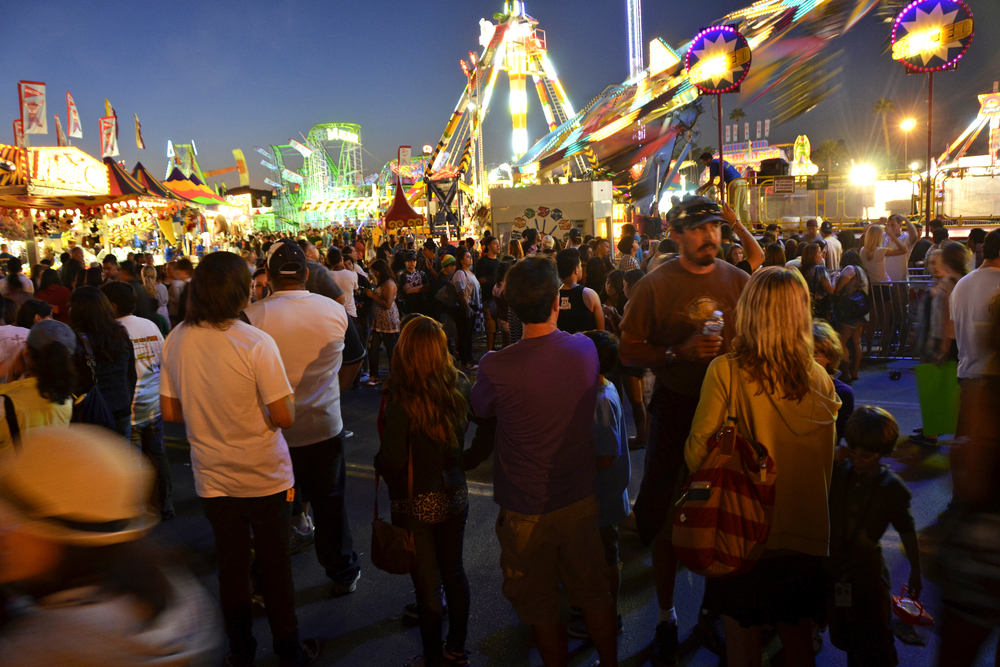During the summer months, you can see them popping up everywhere—on fairgrounds, in parking lots and wherever a crowd will converge. Traveling carnivals are as much a part of summer as swimming pools, picnics and block parties.
As Summer 2014 draws to a close–and as the fall festival season gears up–we take a closer look at traveling carnivals from an insurance perspective. Drew Tewksbury, senior vice president and director of amusements for Cleveland-based broker Britton Gallagher, has specialized in the niche for almost 20 years. Here he discusses the carnival industry and what's involved in insuring it.

Fact: It's a recession-proof business.
The recession has had very little impact on traveling carnivals, which actually performed quite well during the worst years in spite of rising fuel costs, Tewksbury says. People hit by financial hard times tend to spend their dollars locally at traveling carnivals rather than large, expensive theme parks.
The industry is more susceptible to variations in the weather than the economy, with weather being the most significant factor in the growth or contraction of the business. “If it is a bad-weather summer, then the traveling shows will suffer,” he says.

Fact: It's a flat industry facing perpetuation issues.
Although traveling carnivals may seem ubiquitous during the summer months, as an industry, growth is flat, Tewksbury says. “The cost of equipment, fuel and resources has escalated to the point that for the cost of one spectacular ride today, you could have acquired an entire carnival operation in the 1970s,” he says. As a result, industry growth has remained stagnant over the past 10 years.
Like most other small family-run businesses, traveling carnivals also suffer from a generational lack of interest in continuing the long standing family business, he says. “While many third- and fourth-generation showmen are active in the industry, some younger family members are looking to other forms of employment.”
Lastly, with the increased cost of operating a carnival and acquiring equipment, financing has become much tighter, which further restricts the industry's growth.
However, “This industry is a proud, private and professional group of business owners,” he adds.

Fact: Insurance is not hard to obtain.
Several niche insurers find a profitable specialty in traveling carnivals, including Everest Re via Britton Gallagher, ACE Westchester via Haas & Wilkerson Insurance, T.H.E. via Allied Specialty Insurance, and Lloyds of London via The Kaliff Agency.
A typical traveling carnival will have about 20 rides or attractions. They will have a small fleet of tractor trailers, vans and trucks and private passenger vehicles. Standard $1 million limits with various aggregate limits are customary, and appropriate coverage is tailored to the specific needs of the company.
Like most other businesses, carnivals need general liability, property and workers' compensation, but their mobile nature and unique equipment also requires inland marine, cargo, commercial auto and excess/umbrella.
Premiums are priced through specialized individual underwriting, and no rating matrix applies. “Risks have to be priced individually based on exposures and loss history,” Tewksbury says.
Although rides are typically the biggest element to insure, exposures vary from show to show and can include game booth and food vendor trucks.

Fact: The claims are not as wacky as you'd think.
Although carnival business can be “marginally” profitable for insurers, it all depends on the year, Tewksbury says. Industry-wide loss ratios typically hover around the 60% to 65% range. Because of the nature of the business, frequency is less of an issue than severity. “Insuring the traveling carnival business is a specialty area that requires specialty underwriting, experienced loss control and claim management in order for it to make business sense.”
Although most carnival claims are generated by general liability and commercial auto, Tewksbury says that claim activity is “very different and less interesting than one would expect.” Most claim activity comes from pinched fingers, trips and slips on the midway, and when loading and unloading patrons from rides, Tewksbury says.
This is due to the fact that the industry is keenly focused on both patron and employee safety. “The last thing a carnival wants is to have unhappy and injured customers. By and large, they spend significant time and resources as an industry to make certain their midways and rides are both safe and enjoyable for the public.”
Want to continue reading?
Become a Free PropertyCasualty360 Digital Reader
Your access to unlimited PropertyCasualty360 content isn’t changing.
Once you are an ALM digital member, you’ll receive:
- Breaking insurance news and analysis, on-site and via our newsletters and custom alerts
- Weekly Insurance Speak podcast featuring exclusive interviews with industry leaders
- Educational webcasts, white papers, and ebooks from industry thought leaders
- Critical converage of the employee benefits and financial advisory markets on our other ALM sites, BenefitsPRO and ThinkAdvisor
Already have an account? Sign In Now
© 2025 ALM Global, LLC, All Rights Reserved. Request academic re-use from www.copyright.com. All other uses, submit a request to [email protected]. For more information visit Asset & Logo Licensing.








